This is the first of three reviews I’m preparing, looking at Sony’s APS-C camera range spanning 6 years and showing the three separate approaches they took in that time. Two years ago I included the Sony R1 in a nostalgic look back at 5 reasonably early digital cameras.
I described these early digital cameras as dinosaurs and the Sony R1 as ‘a pedestrian in a world filling with automobiles’. However, there are times when walking makes perfect sense, and I’ve used the R1 surprisingly often in the intervening time. I thought it maybe deserved another look, particularly as it represents Sony’s first venture into ‘large sensor’ digital photography. Sony took some different paths over the next few years, but it all started here with a genuine attempt to make something memorable.
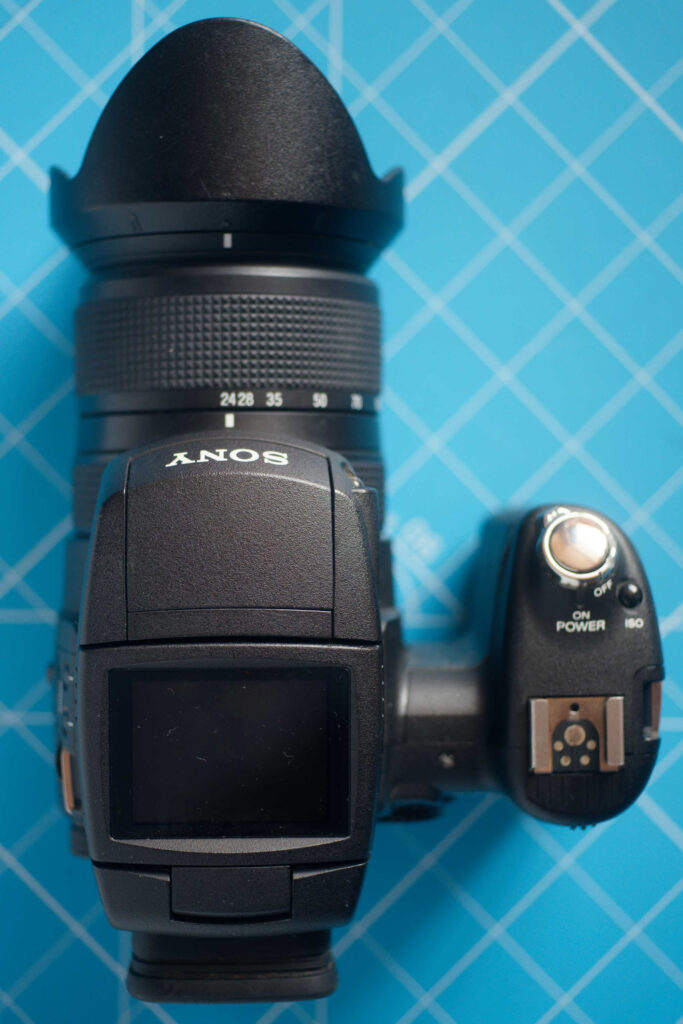
Bridge camera
Prefixed as a Cyber-shot, the DSC-R1 (Sony R1 as I shall refer to it) took some styling cues from the DSC-828, a smaller sensor digital bridge camera that preceded it by nearly 2 years. They share a very L-shaped plan, featuring a built-in flash, mounted on top of an attention-seeking lens. The 828 also opted for a black finish and manual zoom (in contrast to the earlier 717, which had a silver finish and powered zoom toggles).
Specification
The Sony R1 features a CMOS APS-C sized sensor and a fixed zoom lens. It features a large grip on the right that houses an NP-FM50 battery. In place of the original battery a NP-FM500H battery (as used in Sony’s A-mount cameras) can be used. The camera takes CompactFlash cards or the Original Memory-stick Pro (the one that looks like a stick of gum). There is a physical switch on the back of the camera to choose between them – it is either one or the other at any one time.
Optics
Rightly, the Sony R1’s lens was the thing that garnered most attention when it was first released. Described by DPReview as “worth the price of the DSC-R1 alone”, while Imaging Resource described the lens graphs as “so good that they’re almost boring” and noted that “Sharpness across the frame and across the aperture and focal length range is almost perfect”.
The lens in question is a Carl Zeiss branded Vario-Sonnar going from 14.3mm to 71.5mm, spanning an aperture range of f/2.8 to f/4.8, it is a unique design with the rear element of the lens being almost on top of the sensor. Zooming is controlled by a manual ring.
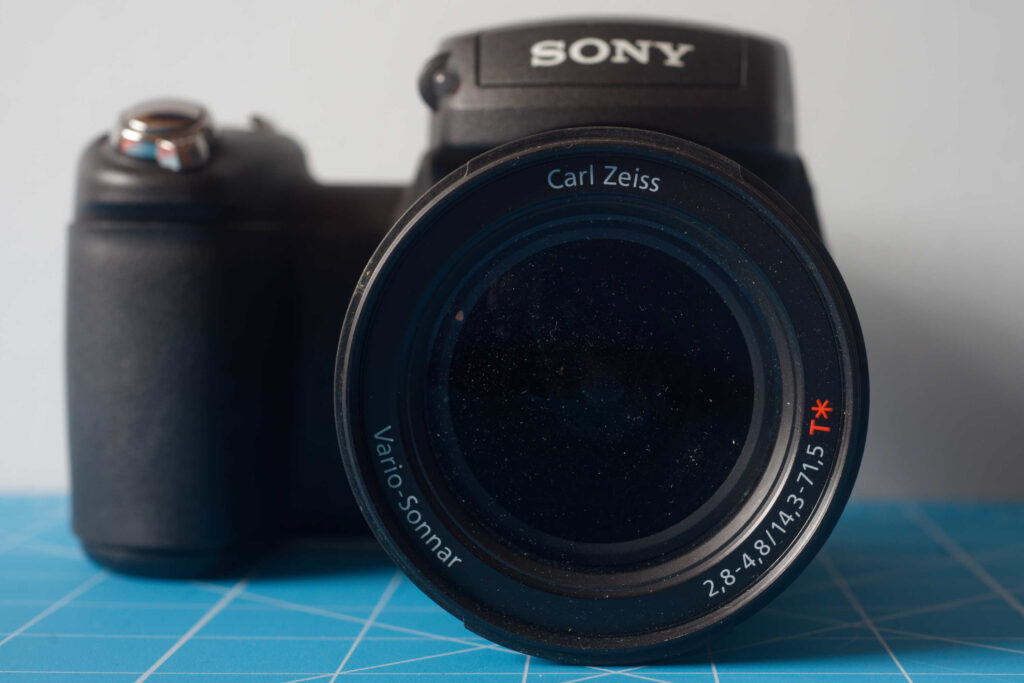
Although the focal length is (very precisely) declared on the ring around the front element, by the time we get to the zoom ring we are showing 35mm equivalent focal lengths. These go from 24 to 120 (as commenter Colin noted, the reference to ‘equiv. 135’ next to these engravings is talking about an equivalent using 135 film, and not a claim that the lens goes out as far as 135mm).
I’m a self-confessed wide-angle nut so the wide option on the R1 is very welcome – having said that I did find myself appreciating the longer end of the zoom as well. The zoom ring is quite nicely weighted, resisting zoom-creep. The front of the lens is protected from flare by a generous petal-shaped hood.
While a 120 equivalent lens is very usable, it doesn’t give immense reach. There were screw-in wide and telephoto supplementary lenses, but they don’t seem to have been big sellers and tend to be expensive on auction sites.
Sensor
The Sony R1 sensor measures out at 21.5×14.4 with a 1.67 crop-factor. This is slightly smaller than most DSLR APS-C equivalents (Nikon use 23.6×15.7 and Canon 22.2×14.8), but it is certainly in the ball-park. Sony claimed 10.3MP off its CMOS sensor – in actuality, the camera produces JPG files that are just over 10MP and RAWs that nudge over 10.2MP. These were days when marketing departments were inclined to push that extra decimal point.
The key thing is that the sensor commonly used in digital ‘bridge’ cameras such as the Sony DSC-828, the Minolta Dimage A2 and the Olympus E-20 was sized at 8.8×6.6mm. The sensor in the DSC-R1 was well over 500% larger than the typical 2/3 sized sensor used in such cameras.
Shutter
The Sony R1 uses a leaf shutter. Because the viewfinder is reading from the live sensor, the leaf shutter has to close, then open again and close once more to finish off the exposure. Generally, one would expect a combined shutter and aperture unit, but stopped down shots with specular highlights show a very regular 7-blade diaphragm. All the more remarkable that the leaf shutter is capable of synching with flash at up to 1/2000.
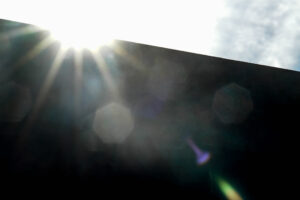
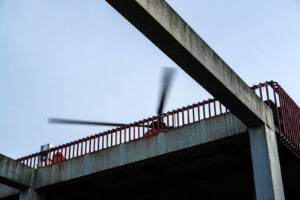
The shutter is silent, but you can select an ersatz focal plane shutter sound which is adequate confirmation that the shutter has fired (although, if you shoot RAW you also get ‘ACCESS’ in white on a blank screen for a few seconds while the camera is writing to the card).
Viewfinder
The Sony R1 viewfinder is electronic. For a digital camera with a 5x zoom lens in those days, this was not unusual. With the sizes of sensor commonly in use, a reflex viewfinder would have required a lot of magnifying optics. What seems strange looking through the R1 viewfinder nearly 20 years after it was released is just how low-res the viewfinder is. Too low to use the camera’s fly-by-wire focusing ring with confidence, particularly as it doesn’t feature focus peaking, although it does give a magnified view on moving the focus ring with manual focus selected. The focus ring has quite a good feel to it for a fly-by-wire unit. Also note that a reflex viewfinder would not have accommodated the lens design that gives those exceptional results.
You do get zebras and you get a choice of previewing the exposure, or seeing an optimised view for framing. You also get useful overlays of information (including histograms) that you can toggle through using a button on the grip.
Layout
Handling-wise, the Sony R1 mimics a baby Bronica ETR with a speed grip – a body-lens unit on the left and a grip on the right. In further homage to medium format, the LCD is positioned on top of the camera body, inviting a shoot-from-waist-high approach (although it can be swung up to point backwards, sideways or even forward for selfies). Because the top of the camera is occupied (and possibly because it looks a bit more medium format), the hot-shoe is on the grip over on the right. This being pre-absorption of KM’s camera division, the shoe is a conventional one with contacts for dedicated Sony flashguns.
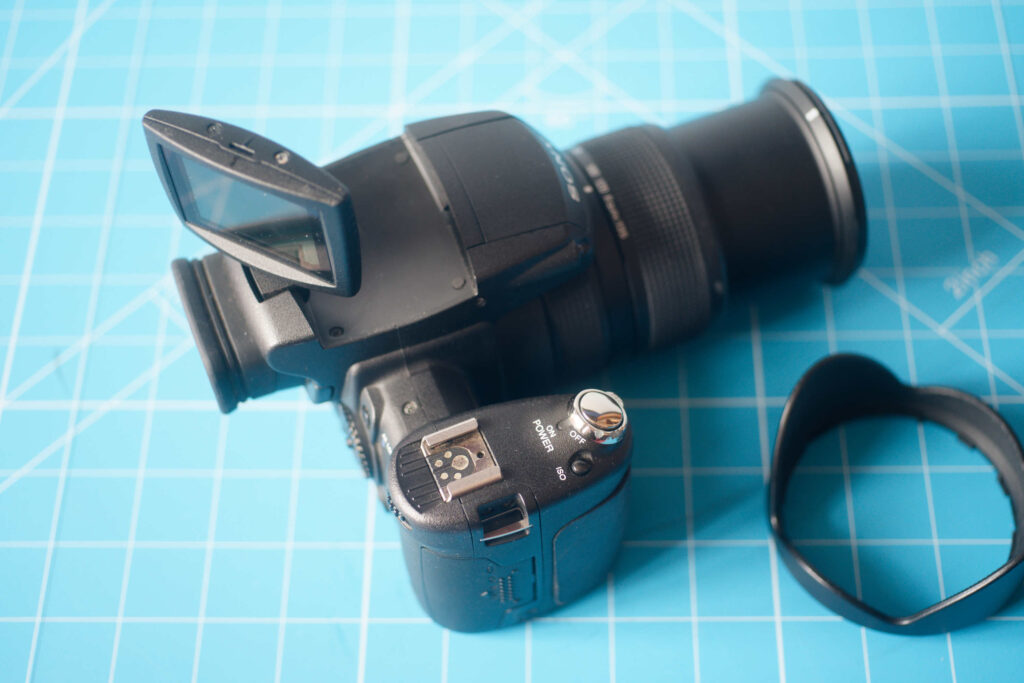
There is also a pop-up flash, which can deploy automatically, but which can also be disabled.
Controls
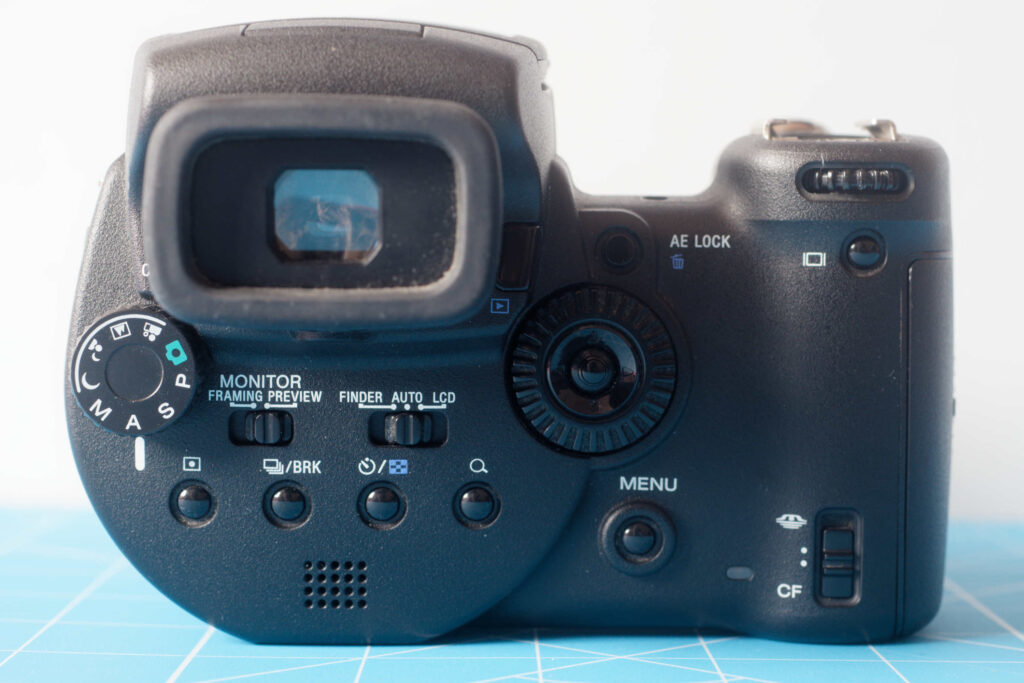
From the left: Mode dial with PASM and scene options. The metering area button, switch to go from framing (ie always bright) to preview. Continuous frame and bracketing options (jpg only), dioptre correction lever (just visible under the finder), self-timer, View selector and magnify button. Just to the right of the viewfinder is the play/review button, right next to that is the vertical control dial that sets exposure compensation in most modes and aperture in manual. The vertical control dial has a joystick controller in the centre for menu selection. Above the dial is an AE lock and below it is the menu button. Over on the right we have the rear control dial at the top (controlling shift in most modes and shutter speed in manual), overlay options (cycling through three options), and card selector. A good set of controls, but some of them in odd or awkward places.
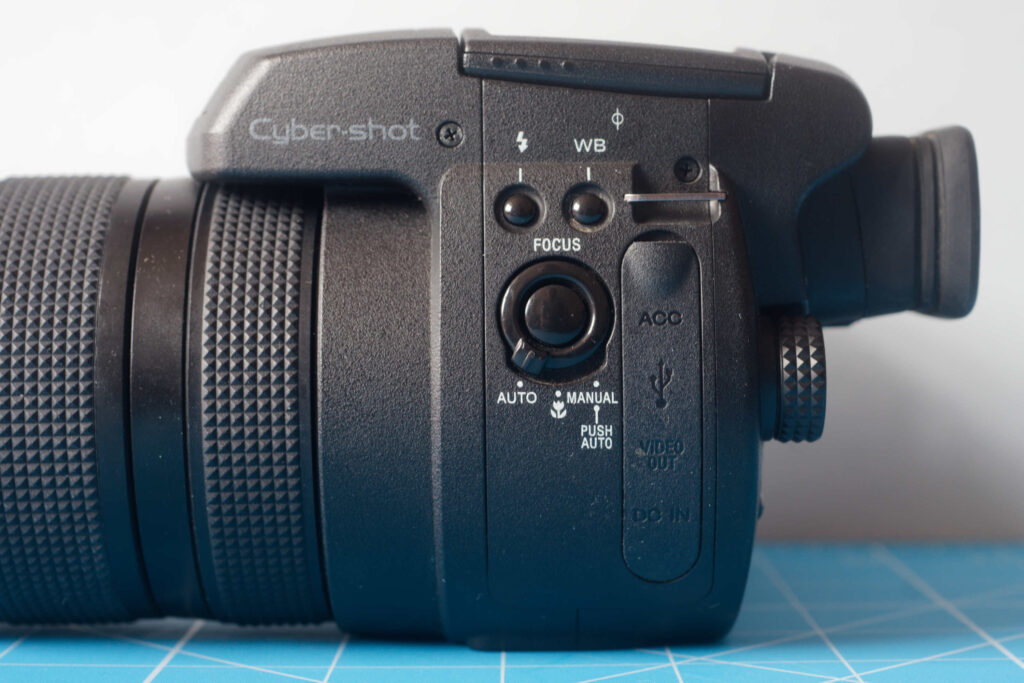
On the left there is a button to manually deploy the flash, a focus selector for auto, macro or manual (pushing the central button in manual focus gets you an auto lock-on), and a white balance button. Under the rubber flap are sockets for USB, video out and DC in.
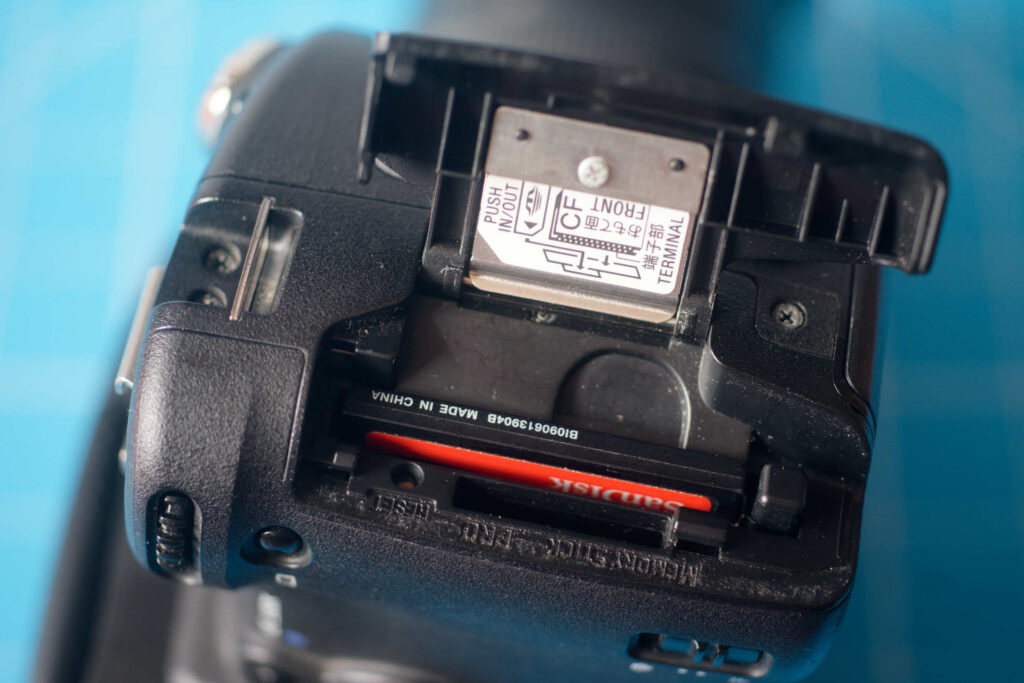 Under the grip door on the right are slots for a CF card and a memory Stick.
Under the grip door on the right are slots for a CF card and a memory Stick.
RAW files
In RAW mode the Sony R1 stores two files to the card – one is a fine JPG, while the other is in Sony’s SR2 Raw format. The SR2 files work quite well, but are not recognized by DXO PhotoLab 7. For RAW processing I had to go back to an old copy of Lightroom (v5). Capture 1 also seems to recognise the SR2 files.
Problems and Limitations
Taking the shine off the handling
The menus and control positioning are from a time just before Sony absorbed Konica Minolta’s camera division and brought their experience with them. The controls are innovative, but not completely intuitive and haven’t necessarily been properly thought (or worked) through.
It was a great idea to emulate a medium format camera by having the screen on top, but it is just a shame that the automatic sensors that switch off the screen and switch on the EVF, also get activated as soon as you bring the back of the camera in towards your body. There is a manual switch to choose between Finder, auto, and LCD, but it is hidden under the viewfinder, just where you can’t see it when you want to use the top LCD.
As mentioned before, the LCD and EVF, while doubtless impressive for their time, only really have sufficient resolution to frame with, leaving accurate focus down to the camera.
Despite that lens, which got it review recommendations from all sides, the different control placement (sometimes seemingly just to be different) didn’t blow reviewers away.
Continuous shooting
Forget it. The Sony R1 is not a speed demon. It does have a burst mode, but you only get 3 fps burst, and only for 3 shots, and only for JPGs. The camera then takes up to 10 seconds to write those files to a card. You can shoot as soon as there is space in the buffer, but your finger needs to come up from the shutter release and re-press. RAW captures are strictly single shot, with a lengthy pause between.
The selfie-friendly screen should have made this a vlogger’s delight ahead of time, but there is one problem. This camera does not do video. It would seem that Sony’s first CMOS sensor ran a bit too hot to supply 25-30 fps, which is consistent with the lousy burst rate.
The 10MP sensor, while perfectly adequate when used to its full potential, doesn’t have much scope for cropping.
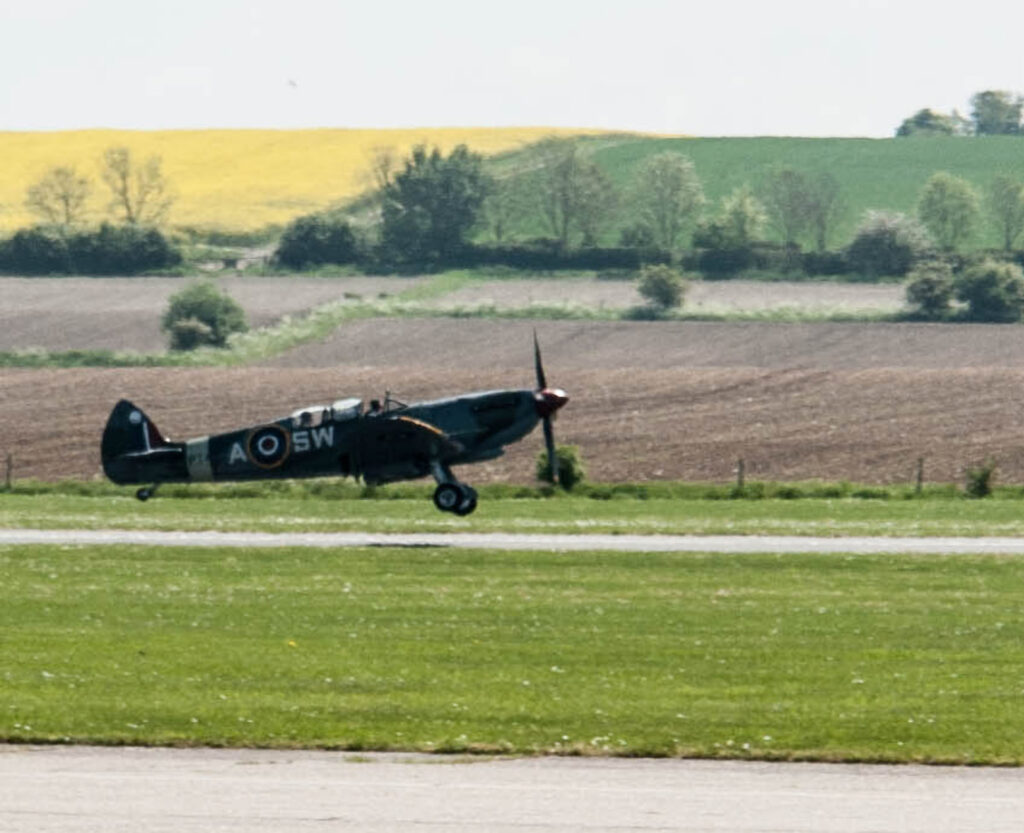
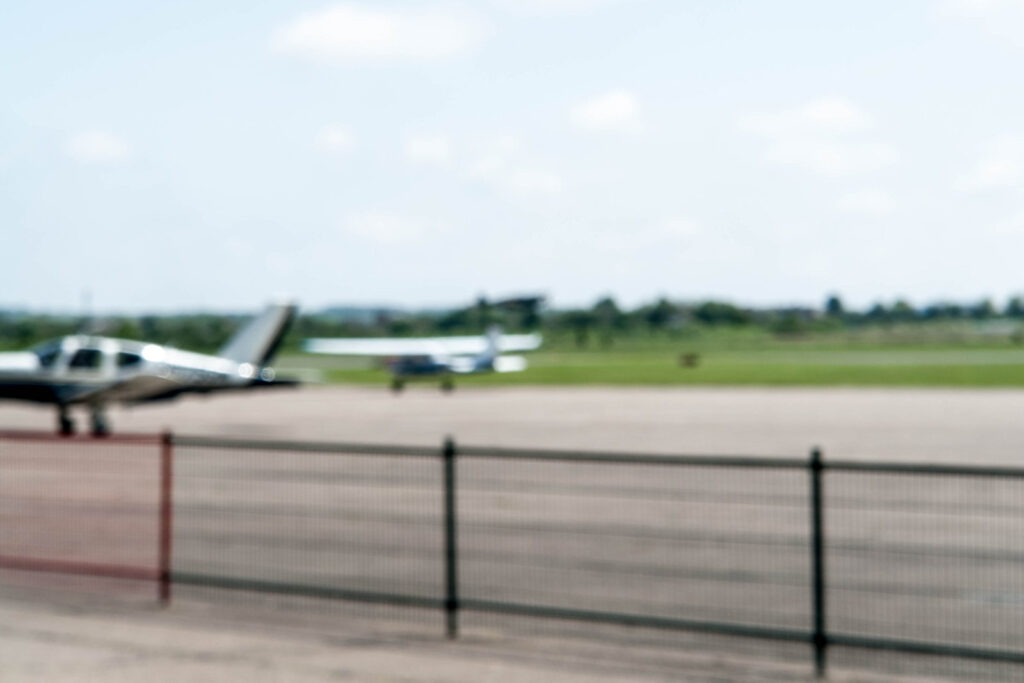
The effects of age?
The Sony R1 was an early example of in-camera charging. Sony supplied an external power supply that charges the battery when the camera is switched off. You can also pop the battery and charge it separately. Unfortunately the passage of 19 years has left the internal memory battery on my R1 pretty ineffective, so if my camera is left without a battery for any appreciable length of time, it goes back to its defaults – meaning I have to set date and time, switch the flash back to manual and disable the start-up tune (and you really want to disable that tune)..
Pictures
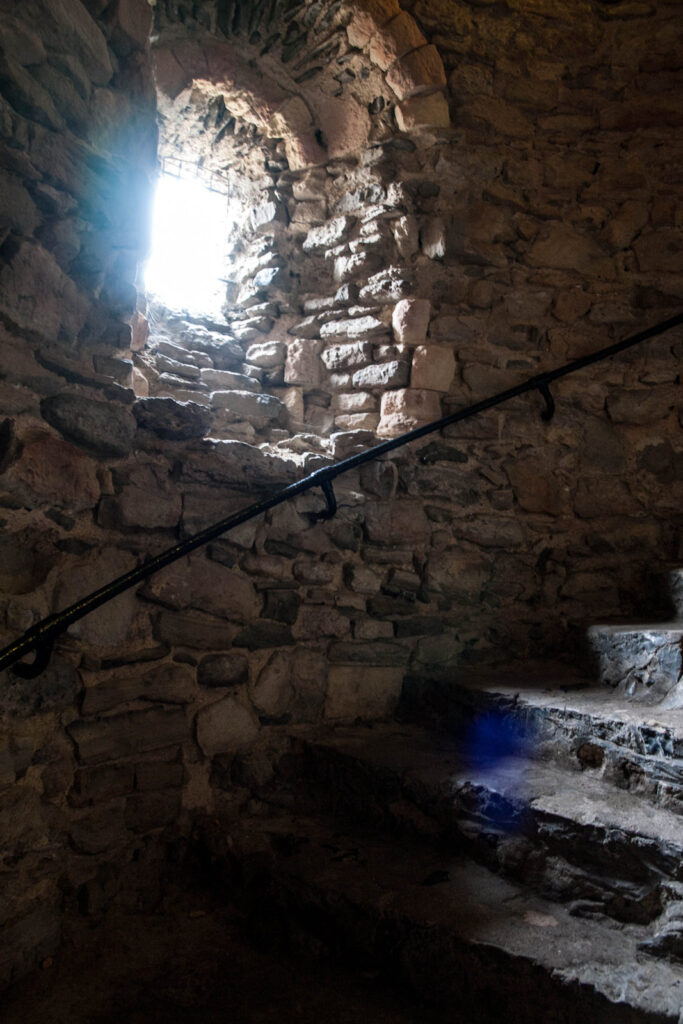


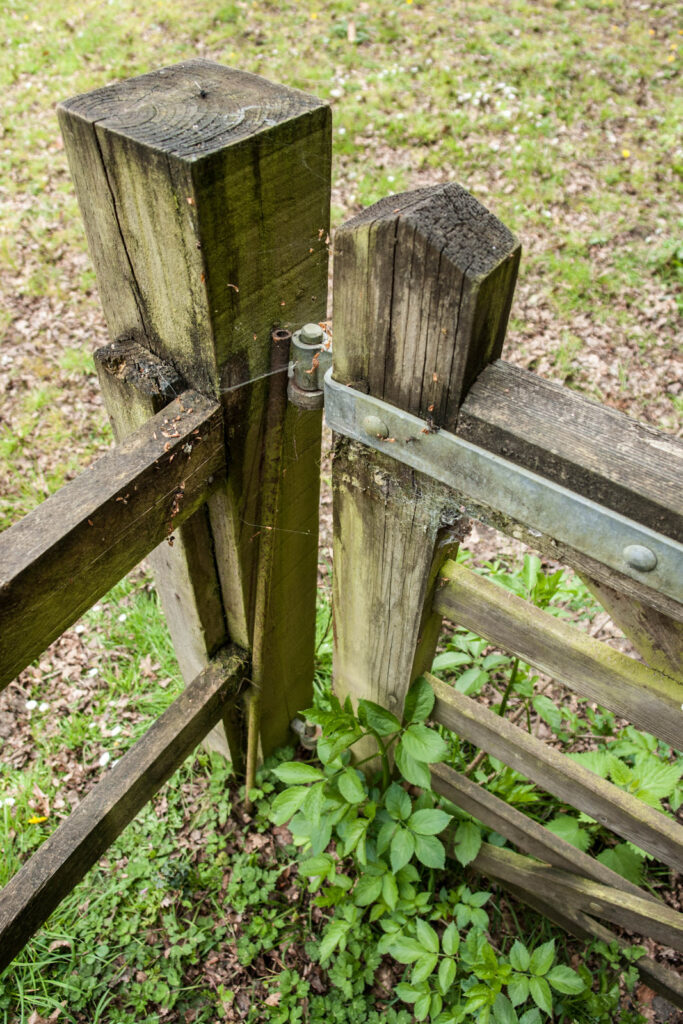
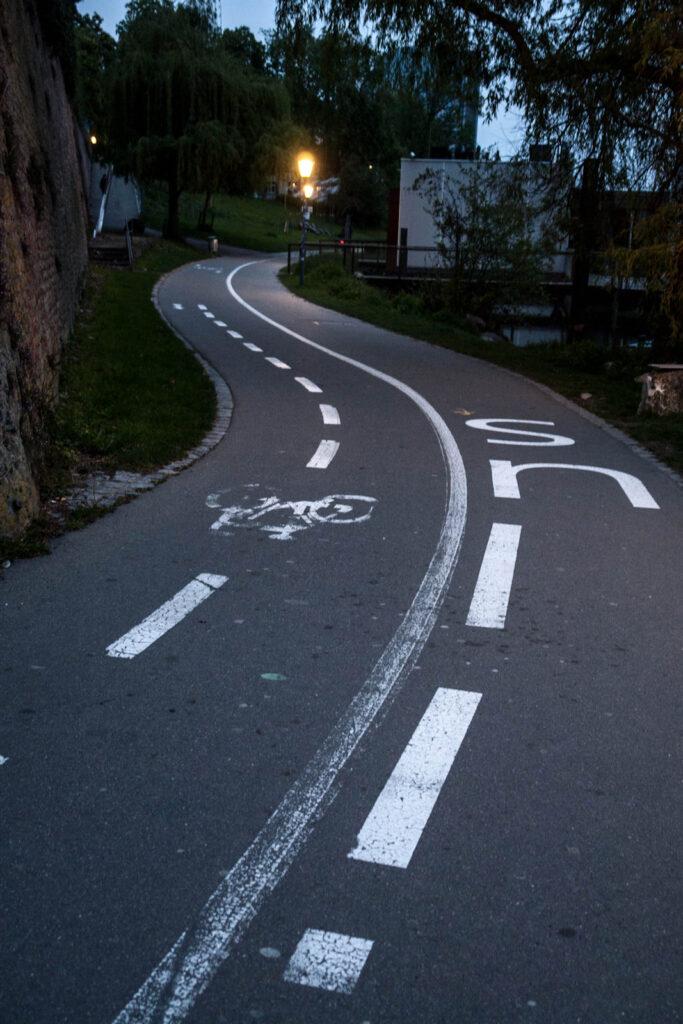
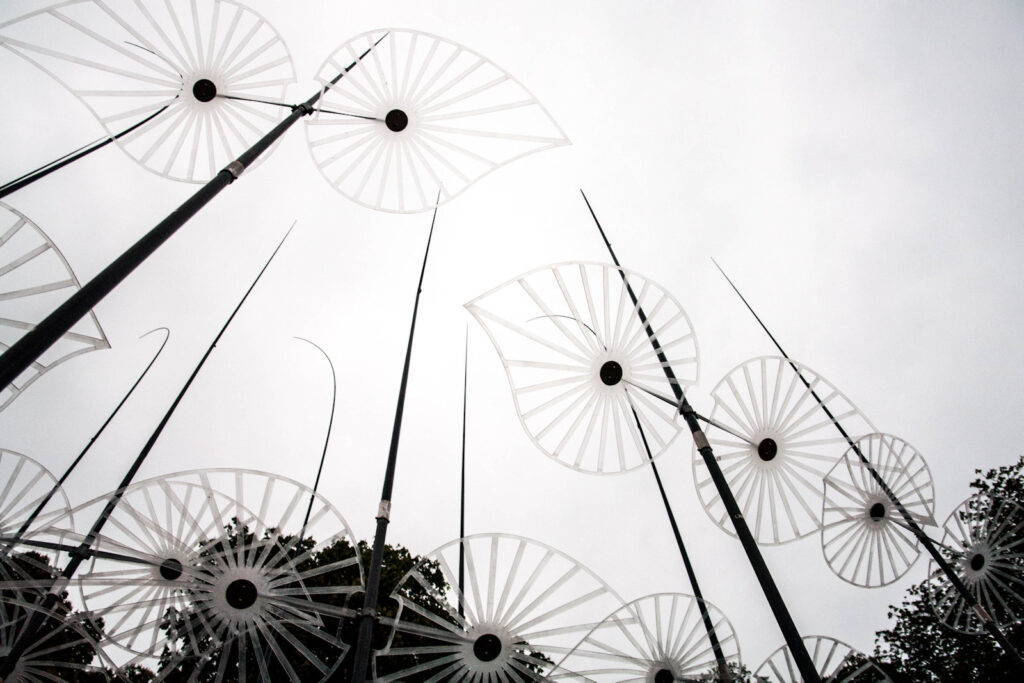


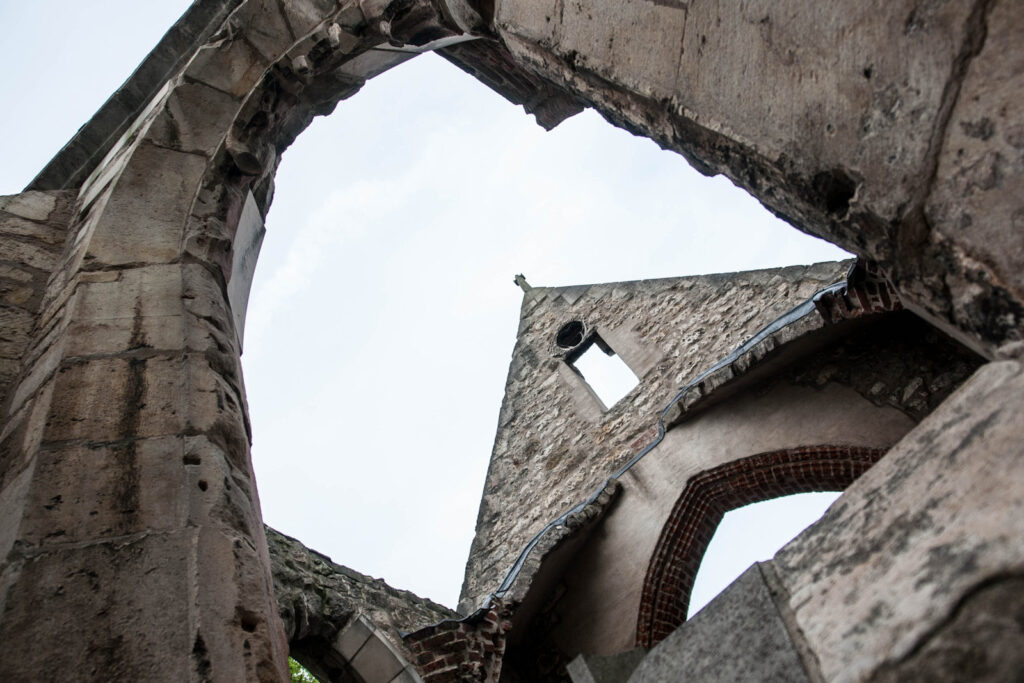
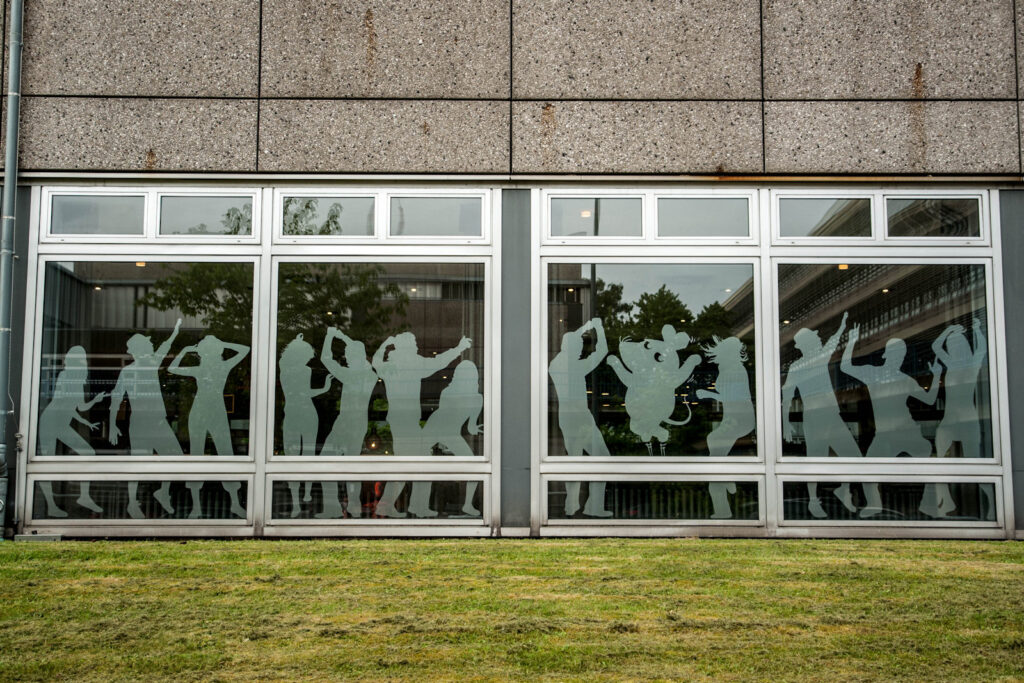
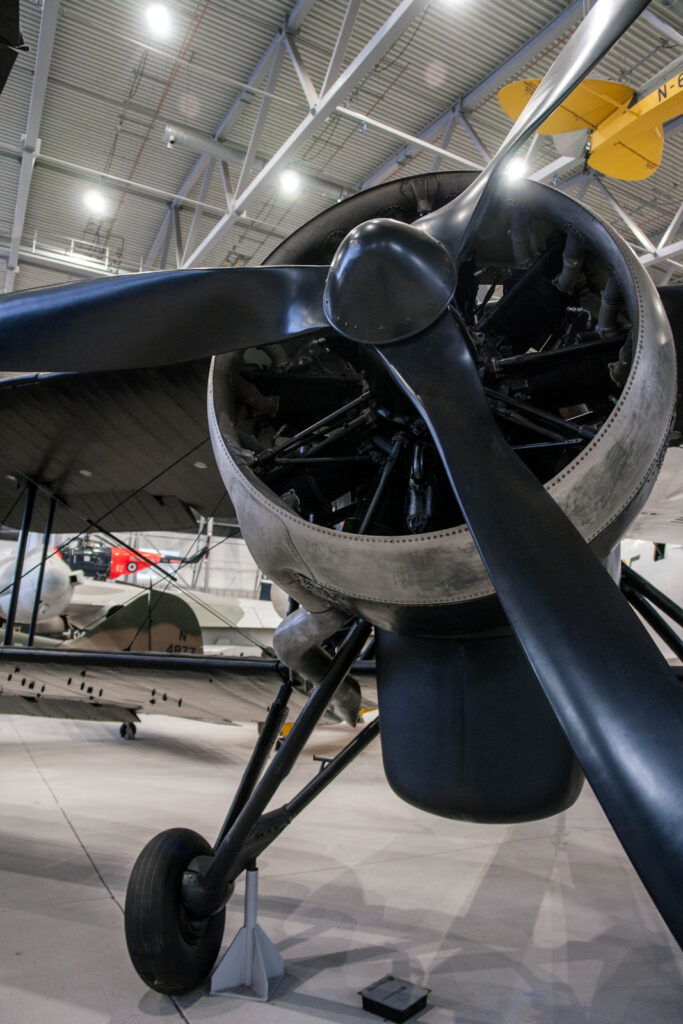
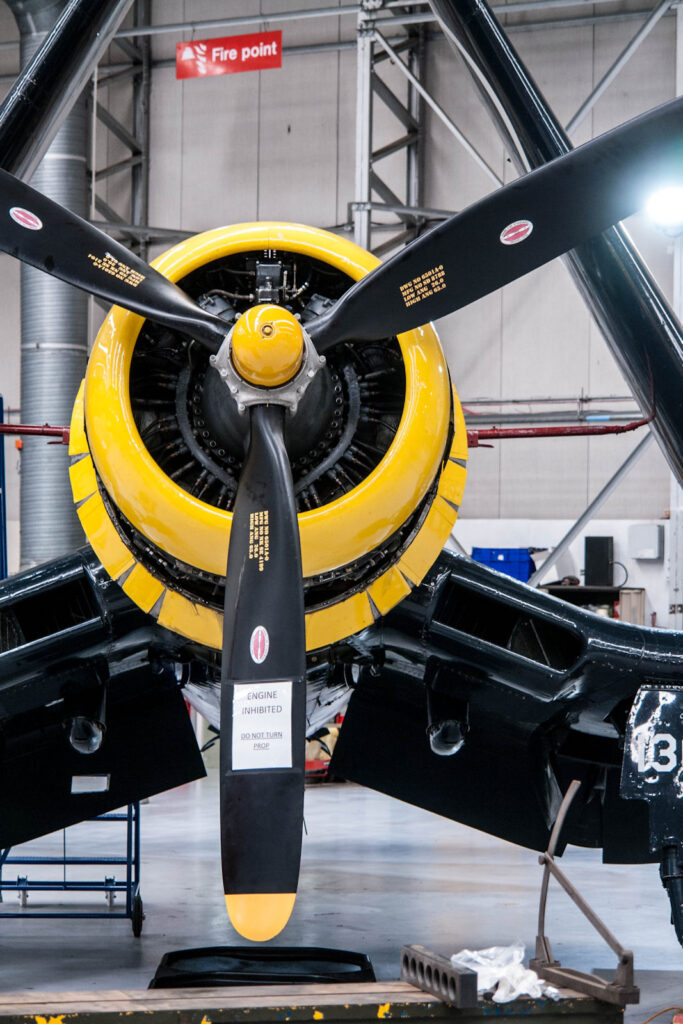
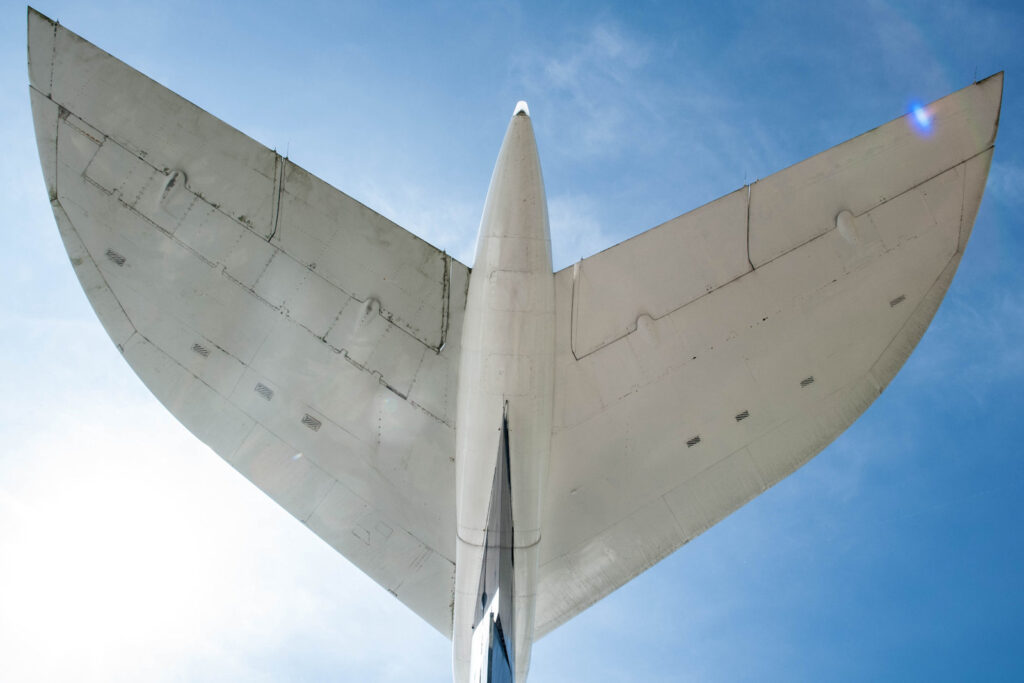
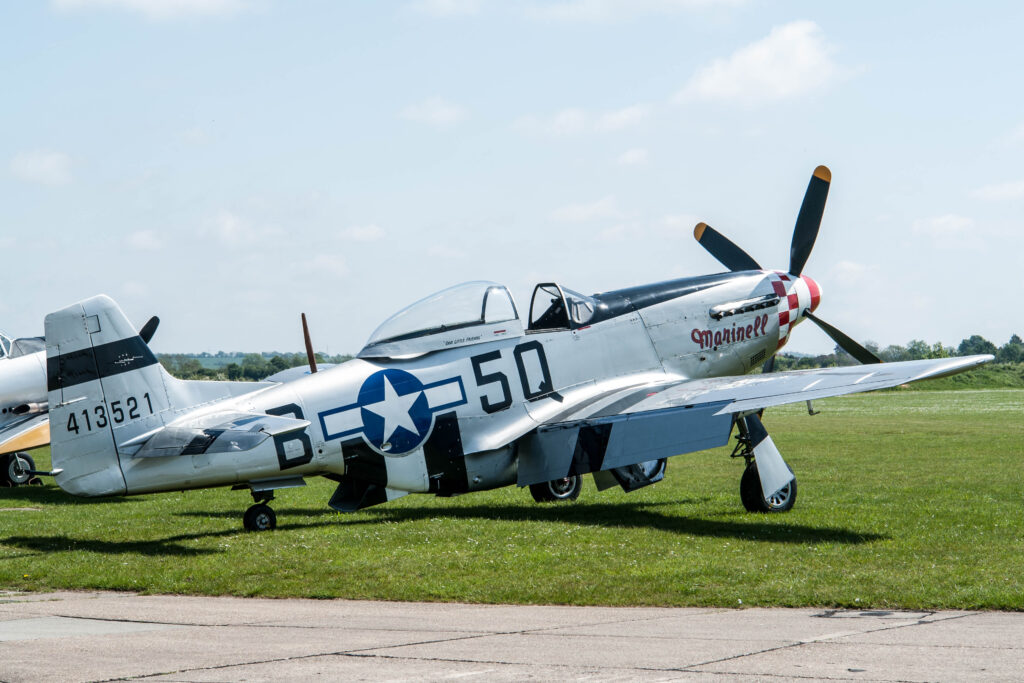
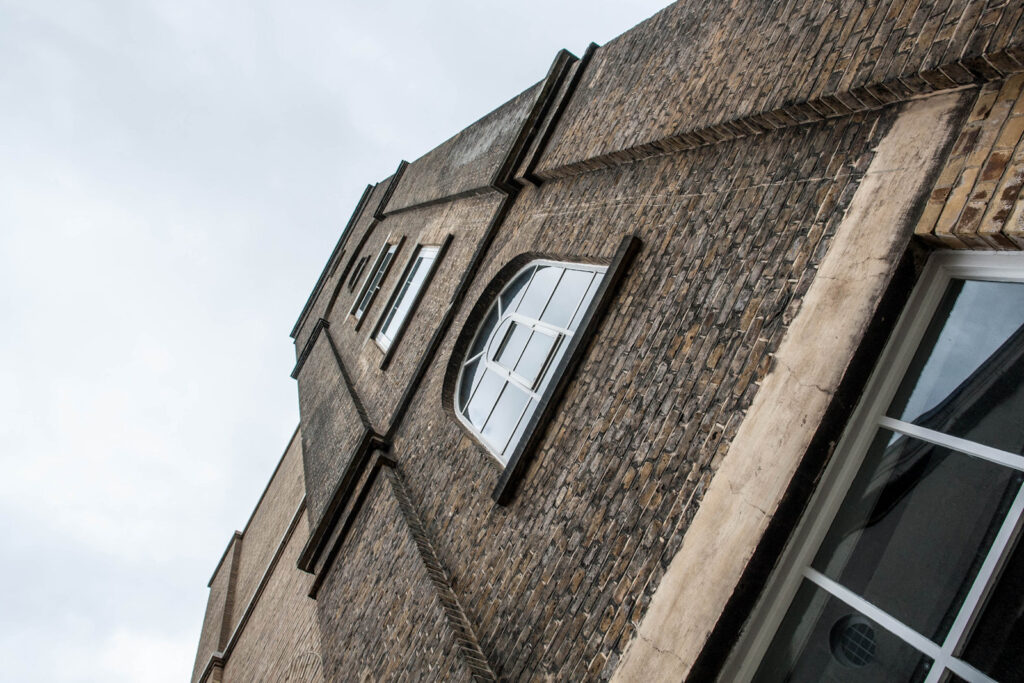
Summing up
The Sony R1 is a camera that still works excellently within its limited bounds. The lens is gorgeous. The sensor resolution is fairly close to what could be recorded with a film APS camera. The grip is deep and the camera feels good in your hands. Even 19 years on, it is a capable tool for still picture-taking. It is fun and inspiring to use. Probably well worth being called a digicam classic.
Next steps
An R2 would probably have been an even better camera, but Sony were distracted by other things. Sony’s new partner for getting into DSLR production threw a curve ball by quitting the camera business, which probably brought forward Sony’s own DSLR plans due to absorbing the old KM camera division and facing the need to bring out an interim camera (the a100) based on the Konica Minolta Dynax/Maxxum/Alpha 5D. Sometime later Sony would release their first home-grown design with their new team, the a700.
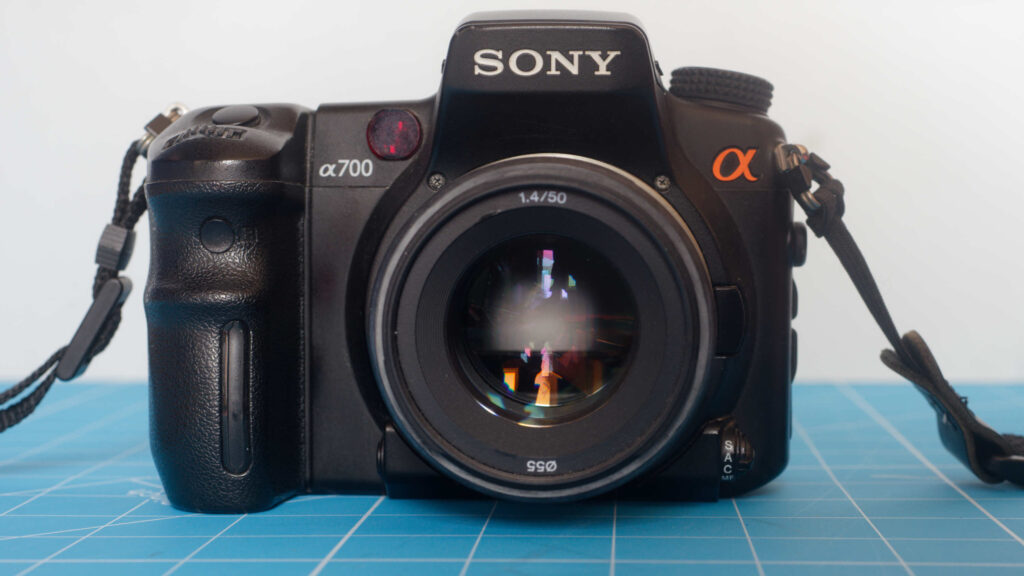
The concept of a fixed lens camera with a bigger sensor did reoccur with the RX-1 cameras, which mated a full-frame 35mm sensor with a fixed 35mm f/2.0 lens. Sony also produced a range of longer zoom cameras tied to a 1″ (13.2×8.8mm sensor), but they never returned to an APS-C bridge camera.
Share this post:
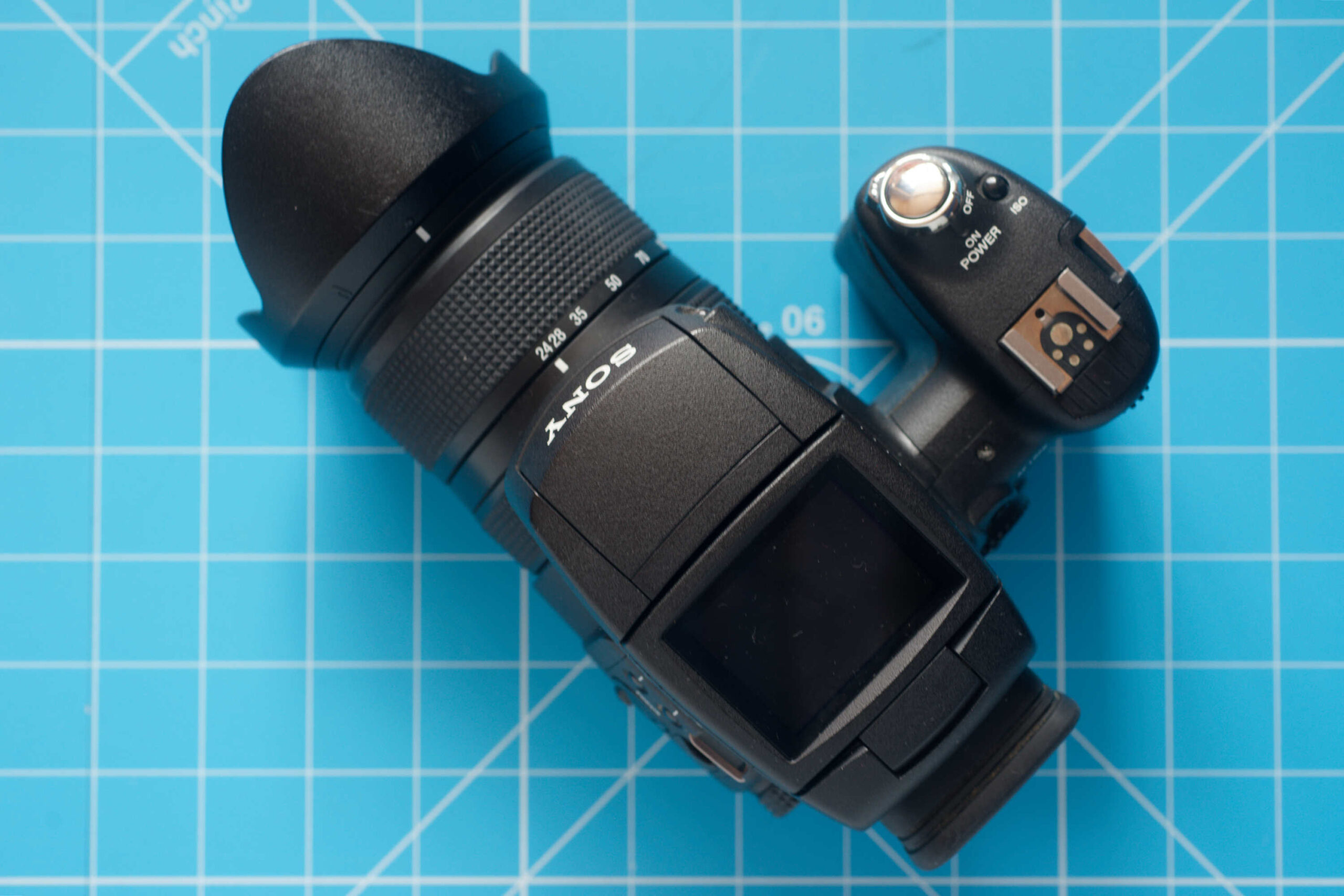
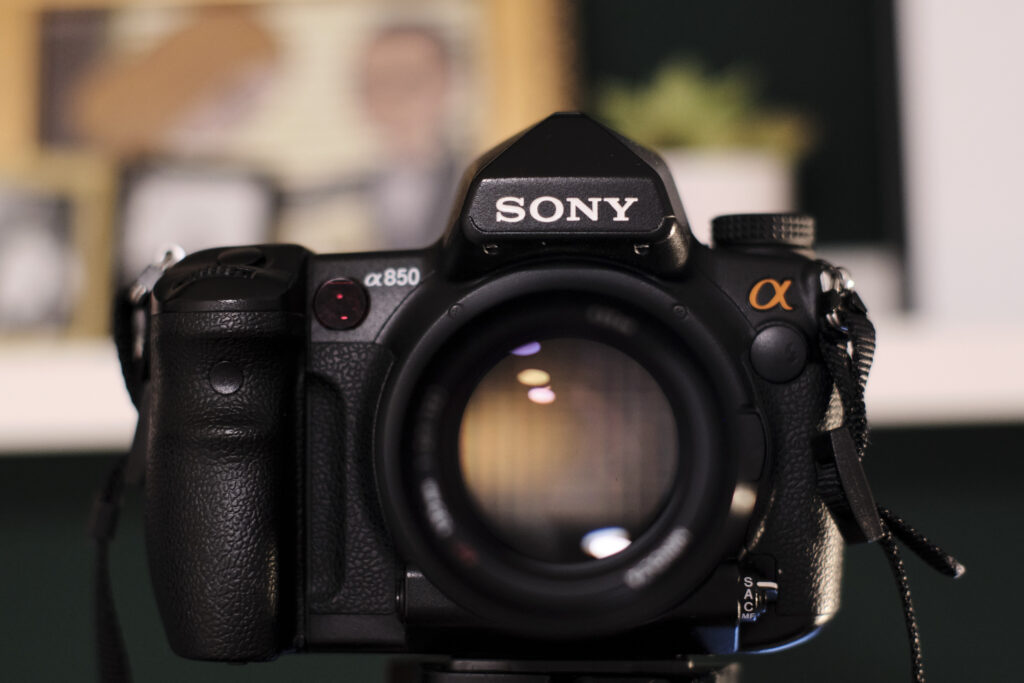
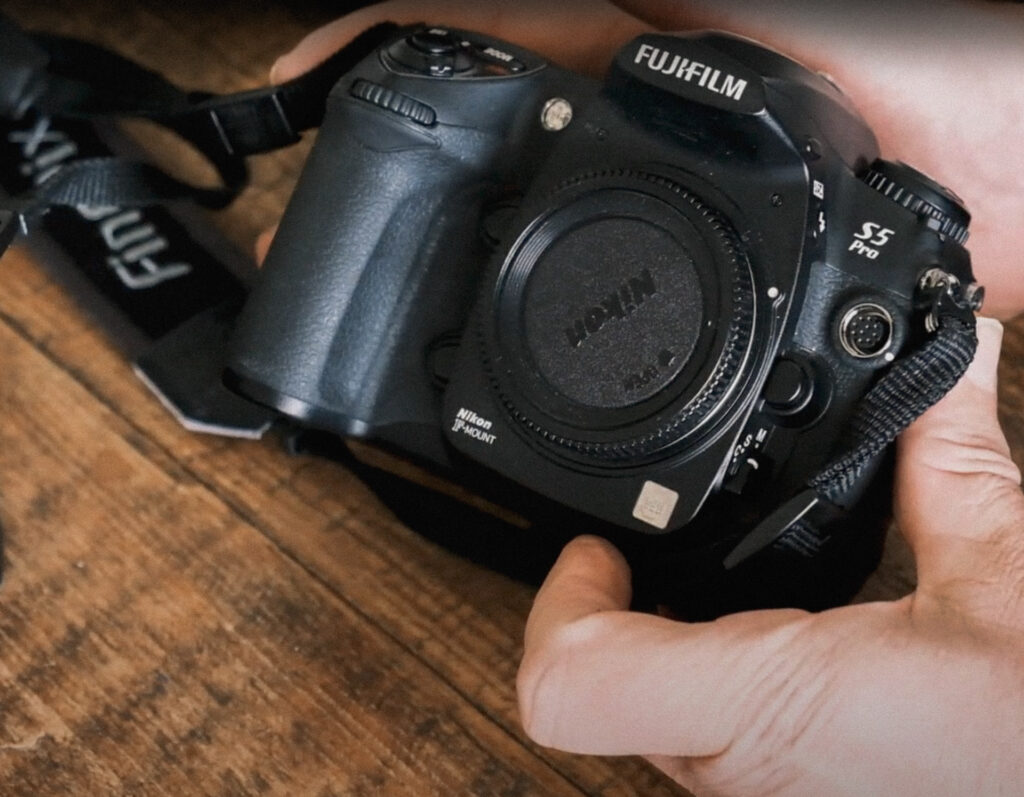
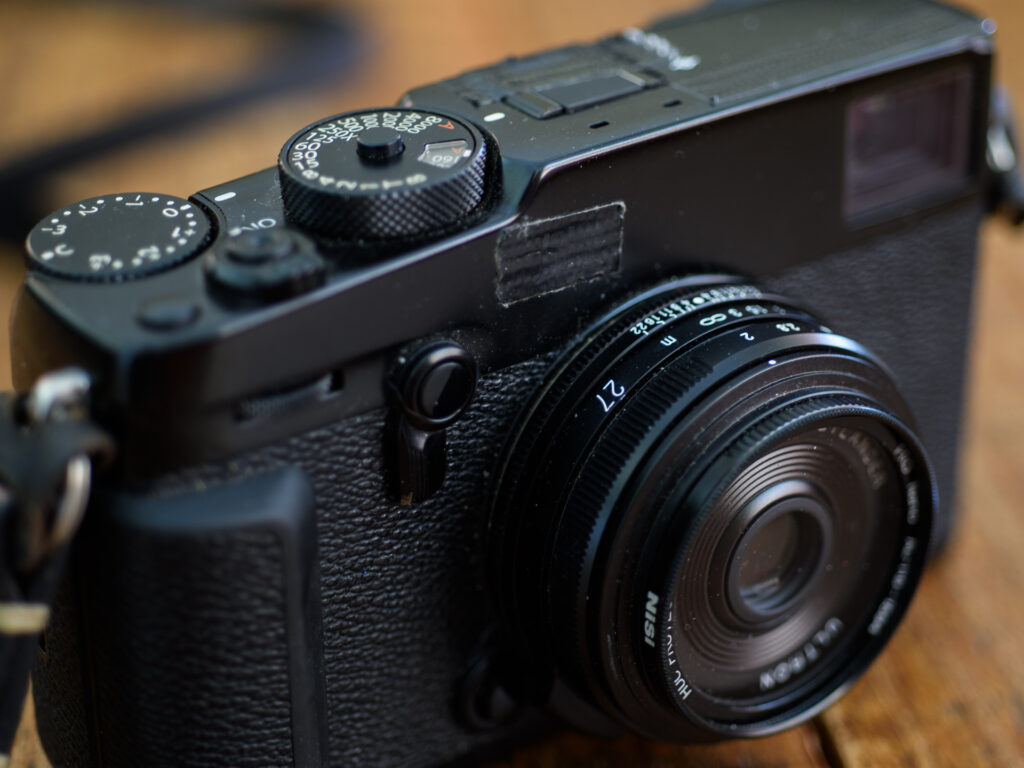
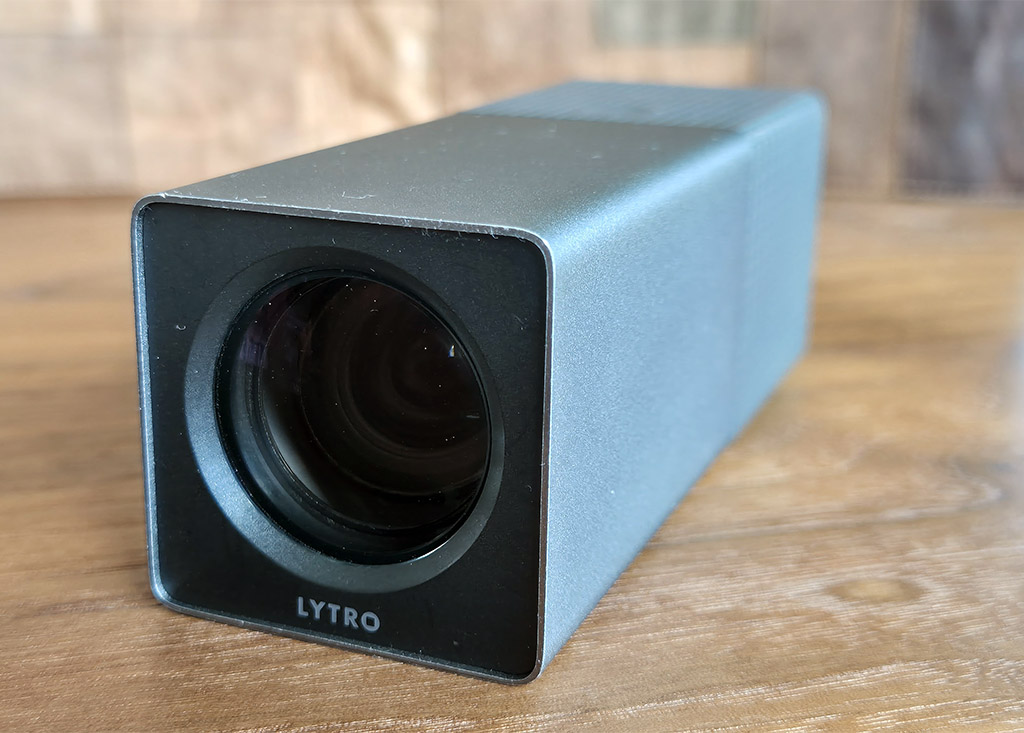




Comments
Victor on Sony R1 – the Original from 2005 revisited – Sony and APS-C part 1 of 3
Comment posted: 12/07/2024
Colin on Sony R1 – the Original from 2005 revisited – Sony and APS-C part 1 of 3
Comment posted: 12/07/2024
I am surprised that I have to explain this, but there is nothing bogus or false about this claim - it just seems you have entirely misunderstood it. It seems that you think the 135 refers to 135mm? No it does not. 135 is the code for 35mm (film) photography. What this "135 equivalent" bit is saying is that _all_ the focal lengths marked on the barrel are not true focal lengths, but rather the equivalent focal length needed when using the 135 format (aka 35mm / full frame) to achieve the same angle of view. They are not claiming that the lens zooms to an equivalent of 135mm!
Comment posted: 12/07/2024
Jeffery Luhn on Sony R1 – the Original from 2005 revisited – Sony and APS-C part 1 of 3
Comment posted: 12/07/2024
For those of us that like the feel of the R1, there's a film camera that is satisfying! I speak of the amazing Pentax 645N. Big bright optical viewfinder, fast and accurate auto focus, and SHARP images. Again, I wish Pentax had taken that design some steps forward, this time into a full frame digital camera model. We can't have everything!
Comment posted: 12/07/2024
Tony Warren on Sony R1 – the Original from 2005 revisited – Sony and APS-C part 1 of 3
Comment posted: 14/07/2024